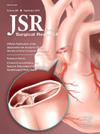甲状腺教科书中的肤色表现:缺乏影像多样性
IF 1.7
3区 医学
Q2 SURGERY
引用次数: 0
摘要
在甲状腺疾病的诊断和治疗方面的种族和民族差异已被确定为各种促成因素,包括诊断和护理的延误,获得医疗保健的机会有限,以及潜在的潜在提供者偏见。历史上,来自不同种族和民族背景的个人,特别是肤色较深的人,在医学教科书中的代表性不足;在考虑某些诊断时,这种代表性不足导致了医学培训生固有的种族偏见的发展。教育资源对与甲状腺疾病相关的提供者偏见的潜在影响是有限的。本研究旨在评估教科书中甲状腺疾病的代表性,特别关注各种肤色的描述。方法对各主要教科书最新版甲状腺疾病章节中甲状腺图像的肤色进行回顾性分析。没有基于语言、出版国家或患者年龄的限制。我们排除了描述甲状腺创伤的图像、黑白图像和插图。肤色采用Fitzpatrick本构量表评估。结果对22本教材中的139张图片进行了分析。大多数图像显示成人(95%)患有良性非感染性甲状腺疾病,如甲状腺肿、甲状腺功能减退和Graves病(46.7%)。菲茨帕特里克构成量表在所有教科书中都描绘了浅色肤色的优势。总的来说,88%的照片描绘的是浅色肤色,而只有12%的照片描绘的是深色肤色。值得注意的是,内科书籍中没有深色皮肤的图像。结论在各种医学教科书中,较深肤色患者在甲状腺疾病图像中的代表性不足。教育资源中相对缺乏对深肤色患者的描述,可能会导致提供者对甲状腺疾病的理解存在偏见。为了解决这种差异,我们建议在教科书图像中使用更多样化的患者肤色。这种方法可以通过减少培训期间可能产生的内隐偏见,帮助减轻甲状腺疾病诊断和治疗中的差异。本文章由计算机程序翻译,如有差异,请以英文原文为准。
Skin Color Representation in Thyroid Textbooks: Lack of Imaging Diversity
Introduction
Racial and ethnic disparities in the diagnosis and treatment of thyroid disease have been identified with various contributing factors, including delays in diagnosis and care, limited access to health care, and potential underlying provider bias. Individuals from racially and ethnically diverse backgrounds, particularly those with darker skin tones, have been historically underrepresented in medical textbooks; this underrepresentation contributes to the development of inherent racial biases in medical trainees when considering certain diagnoses. The potential impact that educational resources have on provider bias related to thyroid disease is limited. This study aims to assess the representation of thyroid disease in textbooks, specifically focusing on the depiction of various skin tones.
Methods
We conducted a review analyzing skin color in thyroid images from the latest editions of major textbooks with sections on thyroid disease. There were no restrictions based on language, country of publication, or patient age. We excluded images depicting thyroid trauma, black-and-white images, and illustrations. Skin color was assessed using the Fitzpatrick constitutive scale.
Results
We analyzed 139 pictures from 22 textbooks. Most images depicted adults (95%) with benign noninfectious thyroid conditions such as goiter, hypothyroidism, and Graves’ disease (46.7%). The Fitzpatrick constitutive scale depicted a predominance of lighter skin tones across all textbooks. Overall, 88% of the images depicted lighter skin tones, while only 12% showed darker skin tones. Notably, darker skin color images were absent from internal medicine books.
Conclusions
The underrepresentation of patients with darker skin tones in thyroid disease images is prevalent across various medical textbooks. The relative absence of depicting patients with darker skin tones in educational resources potentially contributes to provider bias in their understanding of thyroid disease. To address this disparity, we recommend a more diverse range of patient skin tones in textbook images. This approach may help mitigate disparities in the diagnosis and treatment of thyroid disease by lessening implicit bias that may develop during training.
求助全文
通过发布文献求助,成功后即可免费获取论文全文。
去求助
来源期刊
CiteScore
3.90
自引率
4.50%
发文量
627
审稿时长
138 days
期刊介绍:
The Journal of Surgical Research: Clinical and Laboratory Investigation publishes original articles concerned with clinical and laboratory investigations relevant to surgical practice and teaching. The journal emphasizes reports of clinical investigations or fundamental research bearing directly on surgical management that will be of general interest to a broad range of surgeons and surgical researchers. The articles presented need not have been the products of surgeons or of surgical laboratories.
The Journal of Surgical Research also features review articles and special articles relating to educational, research, or social issues of interest to the academic surgical community.

 求助内容:
求助内容: 应助结果提醒方式:
应助结果提醒方式:


